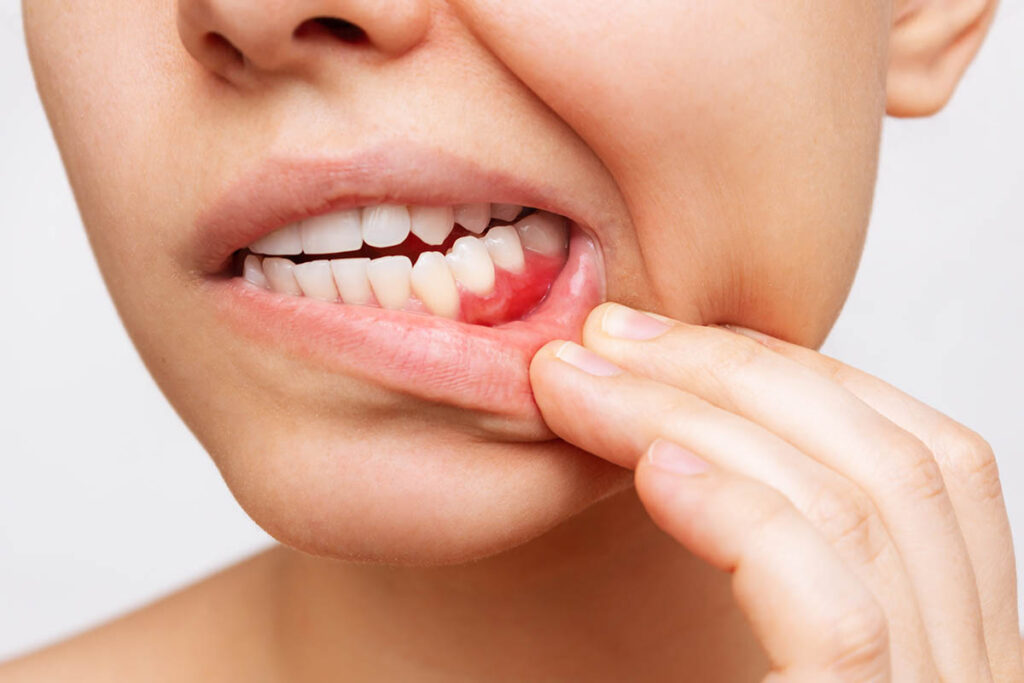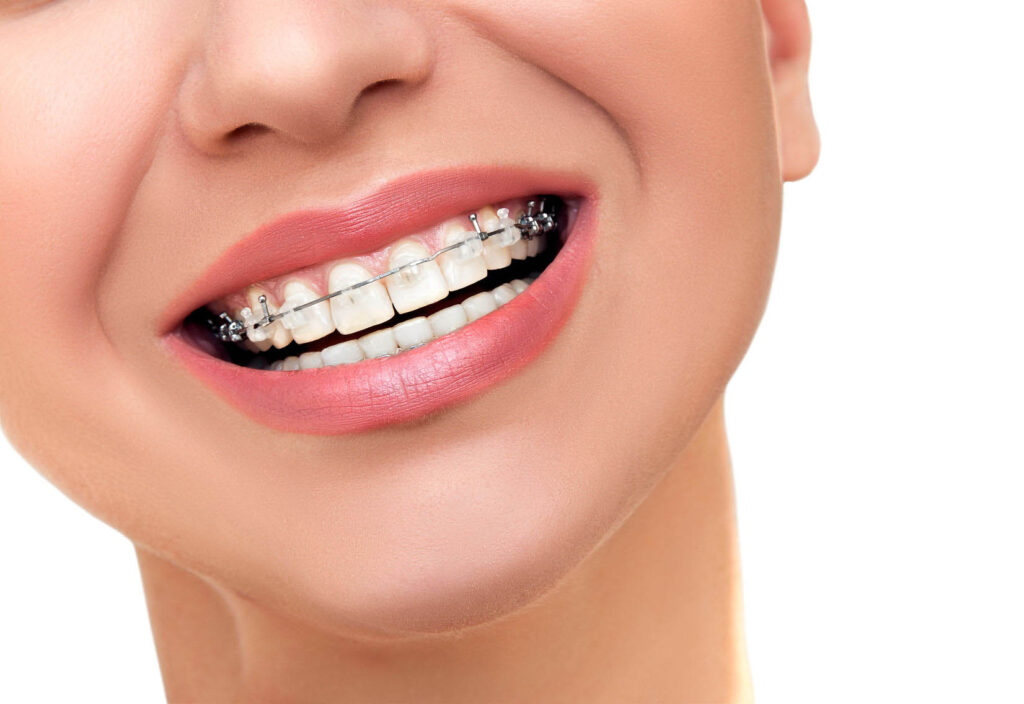
Eat Well, Look Good: Diet and Receding Gums Solutions
Introduction
Receding gums is a common oral health problem that affects many people. It usually occurs as part of periodontal disease and can cause pain, sensitivity, and further dental health issues if left untreated. While it is possible to visit a dentist or periodontist to address the issue, in some cases it may be possible to reverse receding gums at home. Receding gums occur when the tissue around the teeth begins to pull away, exposing the roots of the teeth. This can cause tooth decay, gum disease, and other health issues. It’s important to diagnose and treat the problem as soon as possible. Thankfully, there are ways to help reverse receding gums at home. In this guide, we will discuss the causes of receding gums and how to recognize the signs. We will also provide tips on how to reverse receding gums at home, including DIY treatments, mouthwashes, and herbal teas. Finally, we will explain why exercise, diet, and preventive measures can help to prevent receding gums in the future.
What Causes Receding Gums?
Receding gums can be caused by a number of factors, including poor oral hygiene, genetics and even certain medical conditions. Let’s take a closer look at the most common causes of receding gums.
Poor Oral Hygiene
The number one cause of receding gums is poor oral hygiene. If you don’t brush and floss your teeth on a regular basis, plaque and bacteria will build up on your teeth and gums, leading to inflammation and gum recession.
Genetics
Receding gums may also be caused by genetics. Certain individuals are genetically predisposed to receding gums, regardless of their oral hygiene. If you have a family history of receding gums, then you may be more prone to it as well.
Gum Disease
Gum disease can also contribute to receding gums. Gum disease is an infection of the gums caused by bacterial plaque and is a leading cause of tooth loss in adults. If left untreated, gum disease can cause permanent damage to your gum tissue and lead to receding gums.

Tobacco Use
Smoking or chewing tobacco can damage your gum tissue, leading to recession. Tobacco use also increases your risk for other periodontal diseases such as gingivitis and periodontitis.
Certain Medications
Certain medications can reduce saliva flow in the mouth, making it difficult to clean away bacteria and plaque and leaving you more vulnerable to gum disease and recession. Be sure to speak with your doctor if you notice any sudden changes in your gums after beginning a new medication.
Braces and Retainers
The process of getting braces or retainers can lead to receding gums, as the pressure on your teeth and gums can cause the gums to pull away. Be sure to follow the directions of your orthodontist closely to minimize any potential gum recession.

Signs That You Might Have Receding Gums
Receding gums can be difficult to notice, due to the fact that it is a slow and gradual process. However, there are some signs that you can look out for to help identify the condition:
- Your teeth appear longer than usual.
- Your gum line looks uneven, or as though it has pulled away from your teeth.
- You notice a decrease in the amount of gum tissue that covers your teeth.
- Your teeth have become sensitive to hot and cold temperatures.
- Your gums are tender and bleed easily when brushing your teeth.
- You experience pain or discomfort when biting down, chewing, or speaking.
If you suspect that you may have receding gums, it is important to get it checked out by a dentist or periodontist. They will be able to assess your gum health and give you the correct advice on how best to treat the condition.
Diagnosing Receding Gums
If you think you may be experiencing receding gums, it’s important to get a proper diagnosis from a dentist or periodontist. This is the only way to determine if you’re dealing with receding gums, and to plan an effective treatment.
At your visit, the doctor will start by examining your jaw and teeth, paying close attention to any signs of recession. He or she will also measure the depth of your gum pockets with a small measuring instrument. This assessment, in combination with other tests that assess dental health, such as x-rays, will give the doctor a more complete understanding of your oral health.
Your doctor may also examine your medical history and ask you questions about any medications you take, your diet and lifestyle habits, your family history of receding gums, and any other risk factors that could contribute to gum disease.
Once the doctor has collected all the data, he or she will be able to make an informed diagnosis, and suggest possible treatments for reducing or even reversing the recession.
Home Remedies for Receding Gums
Receding gums can cause pain, sensitivity, and even gum disease. Fortunately, there are some home remedies that could help reverse the effects of receding gums. These include improving your oral hygiene, incorporating mouthwashes and herbal teas into your routine, exercising regularly and making simple dietary changes.
Improving Oral Hygiene
Daily brushing, flossing and rinsing can make a big difference in reversing receding gums. Be sure to brush twice a day, gently and in slow circular motions, and use toothpaste that doesn’t contain abrasives or other harsh ingredients. Flossing helps remove food particles and plaque from in between the teeth, while rinsing with a mouthwash can help fight bacteria. Finally, make sure to see your dentist at least twice a year for checkups and professional cleaning.
Mouthwashes and Herbal Teas
Mouthwashes specifically designed for gum health could help reduce inflammation, kill bacteria and promote healing. Look for a mouthwash that is alcohol-free and contains natural ingredients such as aloe vera, chamomile or eucalyptus oil. Herbal teas like green tea, slippery elm and marshmallow root can also help improve gum health and reduce inflammation.
Exercising Regularly
Exercise is key to maintaining overall health and can help promote gum health and reverse receding gums too. Regular physical activity increases circulation, delivering more oxygen and nutrients to the gums. Exercise also reduces stress, which can have a positive effect on gum health.
Simple Diet Changes
Certain foods can help strengthen your gums, while others can weaken them. Foods that are high in vitamins and minerals, such as fruits and vegetables, are good for your gums. Foods that are high in sugar, acid and processed carbohydrates can damage the gums. Avoiding sugary snacks and drinks, as well as limiting your intake of acidic foods, can help protect your gums from further damage.
DIY Treatments, Mouthwashes, and Herbal Teas
There are a number of DIY treatments and herbal teas that can help to reverse receding gums. These natural remedies can help reduce inflammation and pain, as well as improve gum health.
Mouthwashes can be used to help remove bacteria from the mouth and reduce the risk of gum disease. Some medicines and mouthwashes contain antiseptics that can help reduce inflammation. In addition, some people find that using herbal teas can help reduce the symptoms of receding gums. Herbal teas such as chamomile, calendula, or peppermint can be used as mouthwashes to reduce inflammation and promote healing.
Essential oils can also help to reduce inflammation and pain in the gums. Oils such as tea tree oil, lavender oil, and clove oil can be added to warm water and used as a mouthwash or gargle. It is important to remember that essential oils should always be diluted with water before they are used.

Finally, there are a number of home remedies and natural treatments that can be used to help reduce inflammation and promote healing. For example, many people find that brushing their teeth with baking soda helps reduce inflammation and promote healing. In addition, some people find that applying a mixture of turmeric and honey to their gums helps reduce the symptoms of receding gums.
Exercise to Revers Receding Gums
Exercise can help improve your oral health in many ways. Research suggests that regular physical activity can help reduce inflammation in the body, which may in turn reduce gum recession. Additionally, exercise helps increase circulation which can provide the gums with essential nutrients they need to stay healthy.
The best exercises for gum health are those that focus on improving your chewing movements, such as yoga and pilates. Alternately, activities that involve deep breathing, such as running or swimming, can be beneficial since it enables you to take in more oxygen which helps with healing.
It’s important to note that exercise alone is not enough to undo the damage of receding gums. But combining exercise with proper nutrition and oral hygiene will help support gum health and reduce any further damage.
Surgery to Reverse Receding Gums
For some people with receding gums, surgery may be the best option. There are a few types of procedures that can help to reverse the effects of gum recession. These include:
- Soft Tissue Grafts – During this procedure the dentist, or periodontist, will take a soft tissue graft from the roof of your mouth and attach it to the affected area. This helps to rebuild the lost gum tissue, and can result in a better-looking smile.
- Gum Grafts – In this procedure, the dentist will take gum tissue from one area and attach it to the affected area. This helps to reduce the appearance of receding gums.
- Pocket Reduction Surgery – During this procedure, the Dentist will make small incisions in your gums and remove any infected tissue. The dentist may also recommend using an antimicrobial rinse to help reduce the bacteria in your gums.
The success rate of these procedures is generally high, however, it’s important to note that they are not a permanent solution. The effects of gum recession may still occur over time, so it’s important to maintain good oral hygiene and regularly visit your dentist for check-ups.
Surgery should only be considered if other methods have been unsuccessful. Speak to your dentist or periodontist about the risks and benefits associated with each procedure to decide if surgery is the best option for you.
Diet and Receding Gums
What we eat can have a direct impact on the health of our gums. Eating a diet that is low in sugar and high in fiber, vitamins, and minerals can help to prevent or reverse receding gums. On the other hand, eating too much sugary, processed foods can cause an increase in the amount of plaque and bacteria in your mouth, which can lead to receding gums.
Certain foods are particularly beneficial for gum health. These include:
- Citrus fruits, like oranges, lemons, and grapefruits, which are high in vitamin C and other nutrients that can help fight off infections.
- Leafy greens, such as spinach, kale, and collards, which are high in vitamins A, C, and E and can help reduce inflammation.
- Nuts, such as almonds, walnuts, and cashews, which provide essential fatty acids and protein to strengthen gums and help them fight disease.
- Yogurt, which contains probiotics that can help maintain a healthy balance of bacteria in your mouth.
On the other hand, there are also certain foods that should be avoided when trying to reverse receding gums. These include:
- Sugary and starchy foods, such as candy, cookies, cake, and white bread, which can increase the amount of plaque in your mouth.
- Foods that are high in acid, such as tomatoes, citrus fruits, and vinegar, which can weaken enamel and irritate gums.
- Alcohol and tobacco products, which can dry out your mouth and increase the risk of gum disease.
Eating a balanced diet and avoiding unhealthy foods can help to reduce the risk of receding gums. In addition to this, it is important to brush and floss your teeth regularly in order to keep your gums healthy and prevent disease.
Preventing Receding Gums
Receding gums can be a serious issue, but it doesn’t have to be something that you simply accept. There are several steps you can take to help prevent receding gums and keep your smile healthy.
The first step is to make sure that you maintain good oral hygiene habits. You should brush your teeth twice a day using a soft toothbrush and a fluoride-containing toothpaste, and you should floss at least once a day to remove any plaque buildup between the teeth. You should also use an antiseptic mouthwash to help reduce bacteria in your mouth.
It’s also important to visit your dentist regularly. This will enable your dentist to detect any early signs of receding gums and provide treatment to prevent further damage. Your dentist can also provide advice on how to improve your oral hygiene.
Finally, if your gums hurt or bleed when brushing, you should stop immediately and speak to your dentist about the issue. This is usually a sign of gum disease, which can lead to receding gums if not treated promptly.
By following these simple steps and keeping up with your regular dental visits, you can help prevent receding gums and maintain a healthy, beautiful smile for life.
What We Learned About Reversing Receding Gums
Receding gums is a common problem that affects many people, but with thoughtful and consistent care, it’s possible to reverse the process. To achieve this, you’ll need to keep up with your oral hygiene routine, including brushing twice a day and using floss and mouthwash. Additionally, you can supplement your care with exercise and special diets to help strengthen your gum tissue, or even surgery if the condition is severe. With these tips, you can prevent and treat receding gums and have a healthy mouth.
This guide has gone over the basics of receding gums. We’ve looked at the causes, diagnosis, home remedies, DIY treatments and mouthwashes, exercises, and surgeries to reverse receding gums, as well as diets and prevention methods. By applying some of the information discussed in this guide, you can begin the process of reversing and preventing receding gums.
If you’re still unsure of how to proceed, it is best to speak to your dentist or periodontist to get a professional assessment. They will be able to look at your individual case and advise you on the best course of action for your particular situation.
Resources
Reversing receding gums at home is a complex topic, and there is plenty of information out there about it. To learn more, here are some reliable resources that can help:
- WebMD – Receding Gums
- Colgate – What Are the Early Stages of Receding Gums?
- American Academy of Periodontology – What is Periodontal Disease?
- Medical News Today – How to Treat Receding Gums at Home
These are just a few of the many resources out there about reversing receding gums at home. Be sure to do your research, talk to your dentist, and follow all instructions to ensure safe and successful treatment.
FAQs About Reversing Receding Gums At Home
- Q: What is receding gums?
A: Receding gums is a common dental issue caused by a gradual loss of the gum tissue around your teeth. It may be caused by gum disease, poor oral hygiene, genetics, and certain lifestyle factors such as smoking or eating more acidic foods. - Q: What are the signs of receding gums?
A: Common signs that you may have receding gums include sensitive teeth, pain or discomfort when chewing, or the visible appearance of duller-looking, darker red or purple gums. - Q: Should I see a dentist for a diagnosis?
A: Yes, it is important to get an evaluation and proper diagnosis from a dental professional such as a dentist or periodontist. - Q: Are there home remedies to reverse receding gums?
A: Yes, there are several home remedies that can be used to help reverse receding gums, such as using mouthwashes or herbal teas to reduce inflammation and cleanse the gum area. - Q: Can physical activity help treat receding gums?
A: Regular physical activity, such as yoga and Pilates, can help prevent the progression of receding gums by increasing blood flow and improving the overall health of the mouth. - Q: Are there surgical treatments that can help reverse receding gums?
A: Yes, in certain cases, surgical treatments such as grafting can be recommended. These should only be considered after getting a proper diagnosis from a dental professional. - Q: How can I prevent receding gums?
A: The best way to prevent receding gums is to practice good oral hygiene and work with your dentist to manage any current conditions. In addition, reducing your intake of acidic and sugary foods and drinks can help protect your gums.
